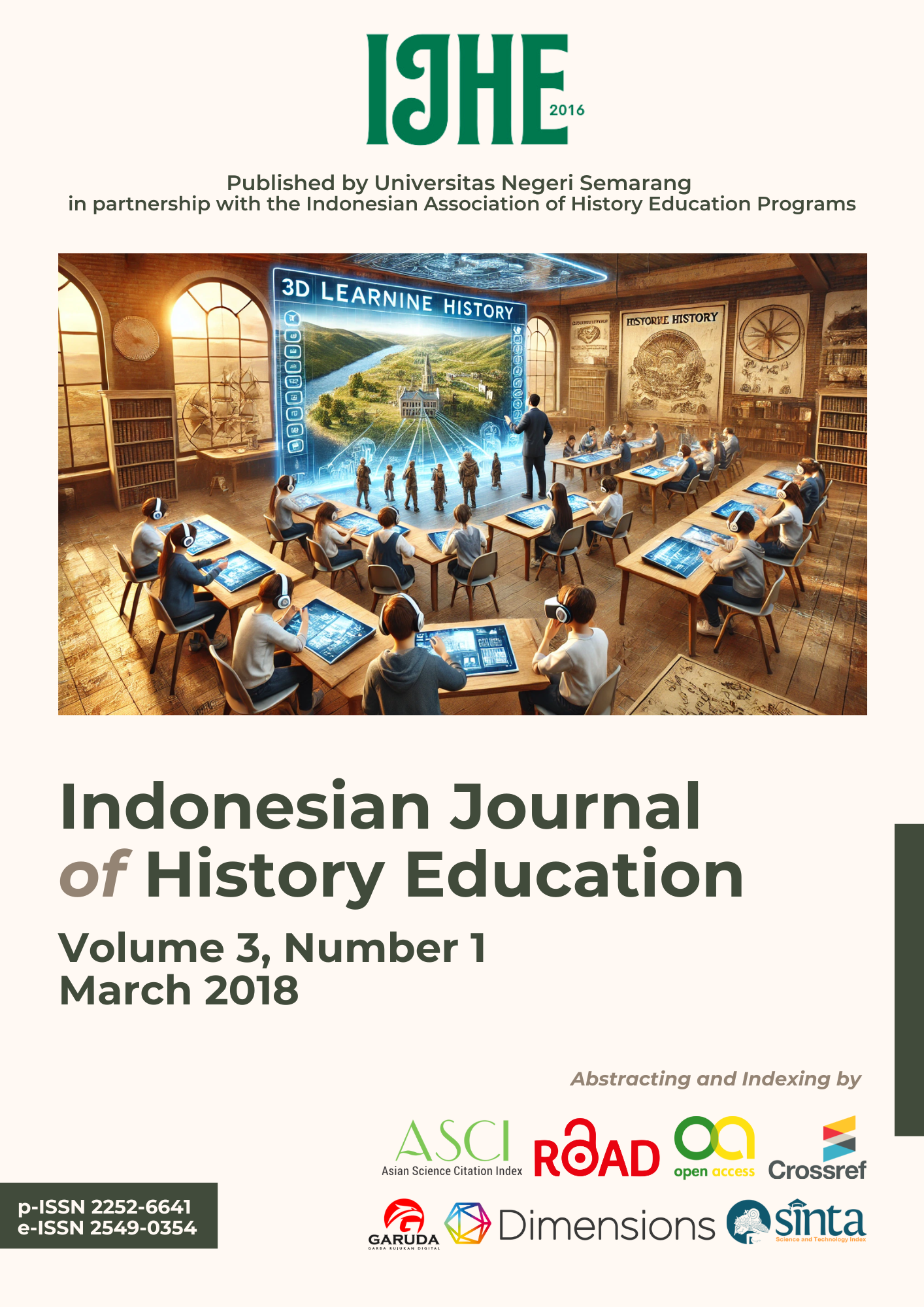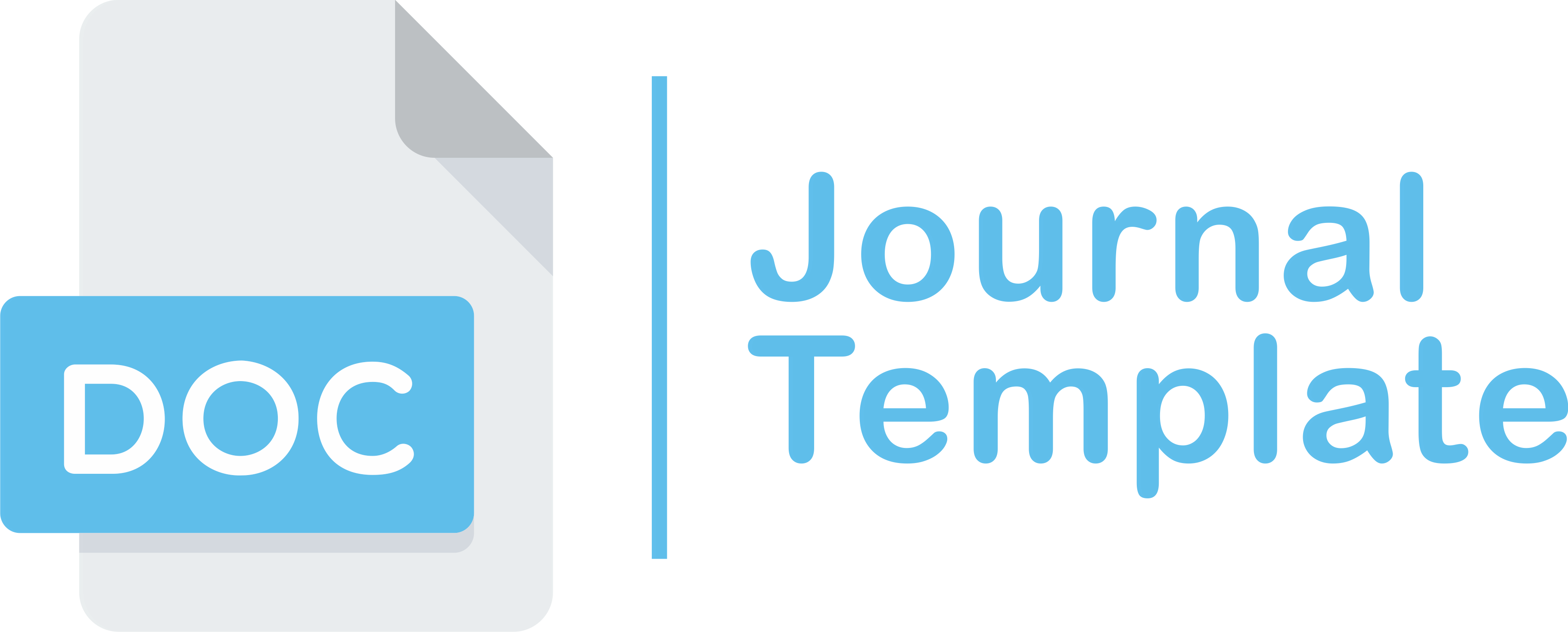Implementation of History Learning Planning Study of Interest and Understanding of History in Students
Abstract
A well-crafted learning plan is indispensable in the study of history, given its profound impact on shaping our understanding of the past and influencing our perspectives on the present and future. This article explores the methodologies employed by history educators in devising and executing their lesson plans, focusing on how these strategies influence students' sustained interest in historical narratives and deepen their grasp of intricate historical concepts. By meticulously planning and implementing effective teaching practices, educators can adeptly navigate the complexities of history education, ensuring the attainment of educational objectives. Central to this achievement is students' active engagement and enhanced comprehension of historical contexts, which are pivotal in fostering a meaningful learning process. Research conducted in the Rembang district underscores the efficacy of history teachers' pedagogical approaches, emphasizing their ability to develop engaging lesson plans that resonate with students and facilitate enriching learning experiences.
References
Darsono, M. (2014). Strategi Pembelajaran yang Efektif. Remaja Rosdakarya.
Hilal Mahmud, M. M. (2015). Administrasi Pendidikan (menuju sekolah efektif). Penerbit Aksara TIMUR.
Isjoni. (2007). Pembelajaran Sejarah Pada Satuan Pendidikan. Alfabeta.
Izzan, A. (2012). Membangun guru berkarakter. Humaniora.
Kochhar, S. K. (2008). Pembelajaran Sejarah. Terjemahan Purwanta dan Yovita Hardiati. PT Grasindo.
Lee, Y. A., & Takahashi, A. (2011). Lesson plans and the contingency of classroom interaction. Human Studies. Retrieved from http://link.springer.com/article/10.1007/s10746-011-9181-1 [diakses tanggal 28 Februari 2013].
Madjid, A. (2009). Perencanaan Pembelajaran (Mengembangkan Standar Kompetensi Guru). PT Remaja Rosdakarya.
Musianto, L. S. (2002). Perbedaan pendekatan kuantitatif dengan pendekatan kualitatif dalam metode penelitian. Jurnal Manajemen dan Kewirausahaan, 4(2), 123-136.
Mulyatiningsih, E. (2015). Metode Penelitian Terapan Bidang Pendidikan. UNY Press.
Noor, J. (2011). Metodelogi Penelitian. Kencana Prenada Media Group.
Nurdin, S., & Usman, B. (2002). Guru Profesional dan Implementasi Kurikulum. Ciputat Pers.
Nurdyansyah, N., & Fahyuni, E. F. (2016). Inovasi Model Pembelajaran Sesuai Kurikulum 2013. Pustaka Pelajar.
Prasetyo, B. (2014). Pemanfaatan sumber sejarah sebagai media pembelajaran. Buku Pendidikan Sejarah. Penerbit Andi.
Rasyid, M. R. (2008). Optimalisasi peran guru dalam proses transformasi pengetahuan dengan menggunakan media pembelajaran. Lentera Pendidikan: Jurnal Ilmu Tarbiyah dan Keguruan, 11(1), 55-68.
Rifa’i, A. R. C., & Ani, C. T. (2011). Psikologi Pendidikan. UNNES Press.
Salirawati, D. (2007). Teknik Penyusunan Modul Pembelajaran. Universitas Negeri Yogyakarta.
Slameto. (2003). Belajar dan Faktor-Faktor yang Mempengaruhinya. Rineka Cipta.
Subadi, T. (2006). Metode Penelitian Kualitatif. Pustaka Pelajar.
Sugiyono. (2009). Metode Penelitian Pendidikan: Pendekatan Kuantitatif, Kualitatif, dan R&D. Alfabeta.
Suharyat, Y. (2009). Hubungan antara sikap, minat dan perilaku manusia. Jurnal Region, 1(3), 1-19.
Sulton, M. (2012). Problematika manajemen pendidikan. Journal Ta'limuna, 1(1), 18-32.
Suryadi, H. (2016). Metode Pembelajaran Sejarah di Sekolah Menengah. Pustaka Setia.
Suyanto, S. (2013). Metode dan Teknik Pembelajaran di Sekolah Dasar. Universitas Terbuka.
Trianto, T. (2015). Mengembangkan Model Pembelajaran Inovatif. Prestasi Pustaka.
Ufie, A. (2014). Mengintegrasikan nilai-nilai multikulturalisme berbasis kearifan lokal sebagai sumber pembelajaran sejarah. Criksetra: Jurnal Pendidikan Sejarah, 3(2).
Zendrato, J. (2016). Tingkat penerapan rencana pelaksanaan pembelajaran dalam pelaksanaan pembelajaran di kelas suatu studi kasus di SMA Dian Harapan Jakarta. Scholaria: Jurnal Pendidikan Dan Kebudayaan, 6(2), 58-73.
Yo, L. A., & Takahashi, A. (2011). Lesson plans and the contingency of classroom interaction. Human Studies. Retrieved from http://link.springer.com/article/10.1007/s10746-011-9181-1 [diakses tanggal 28 Februari 2013].
Copyright (c) 2018 Muthohharoh Muthohharoh

This work is licensed under a Creative Commons Attribution 4.0 International License.
Copyright Notice
An author who publishes in the Jurnal Indonesian Journal of History Education agrees to the following terms:
- Author retains the copyright and grants the journal the right of first publication of the work simultaneously licensed under the Creative Commons Attribution-ShareAlike 4.0 License that allows others to share the work with an acknowledgement of the work's authorship and initial publication in this journal
- Author is able to enter into separate, additional contractual arrangements for the non-exclusive distribution of the journal's published version of the work (e.g., post it to an institutional repository or publish it in a book) with the acknowledgement of its initial publication in this journal.
- Author is permitted and encouraged to post his/her work online (e.g., in institutional repositories or on their website) prior to and during the submission process, as it can lead to productive exchanges, as well as earlier and greater citation of the published work (See The Effect of Open Access).
Read more about the Creative Commons Attribution-ShareAlike 4.0 Licence here: https://creativecommons.org/licenses/by-sa/4.0/.




